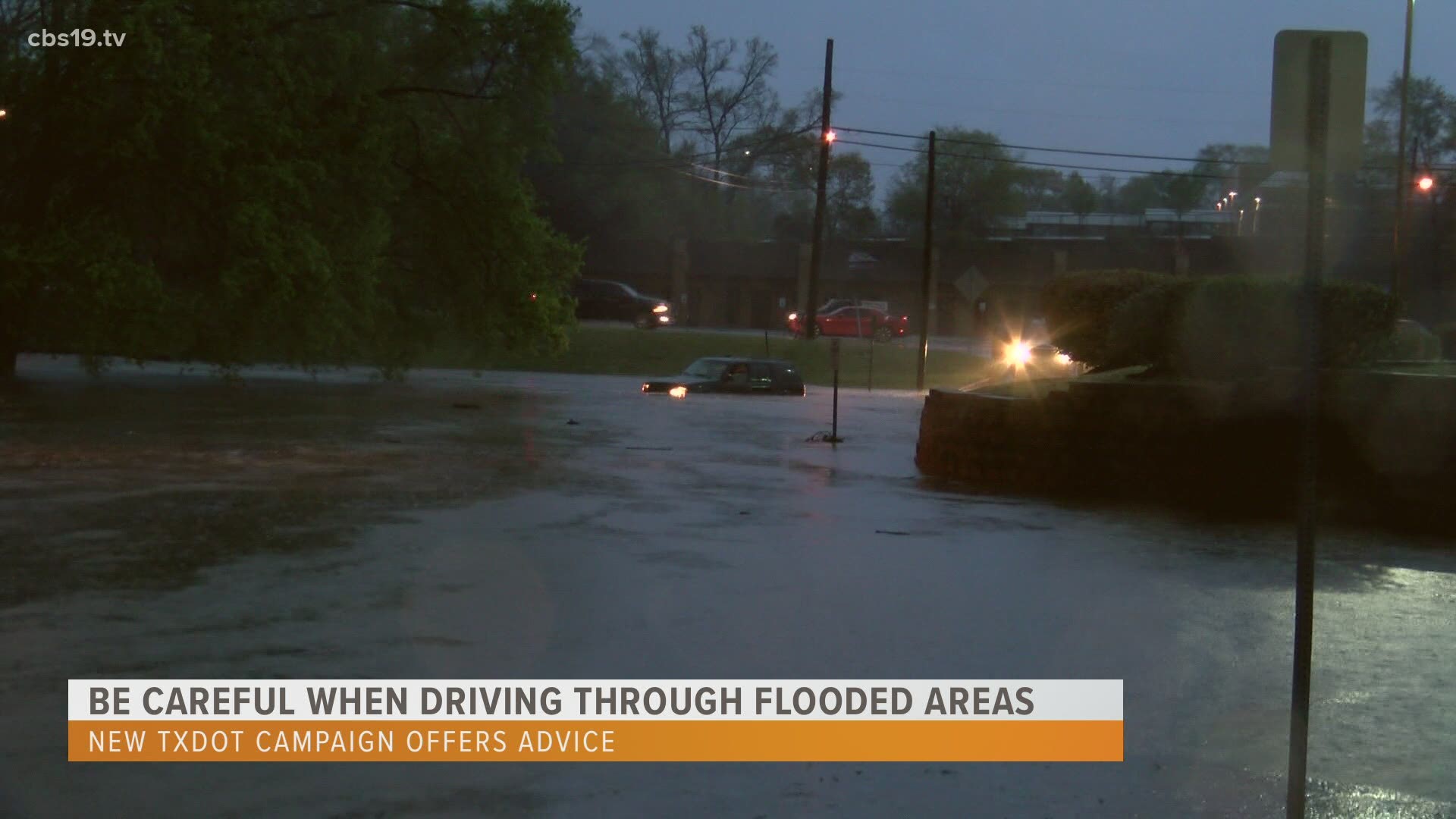LUFKIN, Texas — Flooded roadways and buildings have resulted in multiple street and campus closures in East Texas.
According to Nacogdoches ISD, heavy rain from overnight storms has flooded McMichael Middle School causing the campus to close for Friday while cleanup takes place. No in-person or virtual classes will be held. All other Nacogdoches ISD campuses will be open.
The Texas Department of Transportation (TxDOT), Nacogdoches and Lufkin police are also warning drivers of flooded roadways.
The following areas are under water at this time:
- SL 287 at Tulane Dr. and S. First St., as well as the northbound flyover, in Lufkin are not passable and are closed due to flooding;
- FM 2863 near SL 224 in Nacogdoches is flooded;
- SH 7 West about two miles from Nacogdoches is currently under water;
- SH21 East in Nacogdoches has water across the roadways;
- SH 21 West in San Augustine is flooded with a large tree down.;
- FM 1277 in San Augustine is flooded with a tree down about a mile from SH 103 East;
- FM 1992 in San Augustine is flooded;
- FM 324 South in Angelina County, near the railroad tracks, is now underwater.
US 59/SL 287 near US 59 South/South First Street in Lufkin is now open for travel, according to TxDOT..
Flash flooding is common, occurs quickly, and is very dangerous. Even in flat areas, flash flooding can occur during a heavy downpour.
WHAT TO DO BEFORE A FLOOD
- Assess your risk for flooding. Do you live in a flood plain, in a low-lying area, or along the coast? Are there creeks and streams nearby that fill up when it rains? Are there low-lying areas near or around your home’s perimeter?
- If your risks are high, consider getting flood insurance. Most homeowners insurance policies do not cover damage from rising water.
- You may be able to reduce your risks by improving drainage near or around your home. Install drains or dig ditches to help divert water before it has a chance to rise.
- In some cases, sandbags can prevent floodwaters from entering your home. Purchase sandbags if you may need them, and be sure to fill them up ahead of time.
- When the threat of flooding is high, evacuate early. Don’t wait until it’s already flooded. If you have time, shut off the electricity before you go.
- Create your Disaster Supply Kit and keep it in an easily accessible place.
WHAT TO DO DURING A FLOOD
- Keep your Disaster Supply Kit handy so you can grab it and go in case you must evacuate suddenly.
- Don’t underestimate the power of floodwaters. They can move swiftly, often faster than they appear. They are very dangerous. A car will float in only a few inches of swiftly moving water.
- Never allow children to play near floodwaters.
- Adults are also at risk. As little as six inches of moving water can knock an adult off their feet.
- If you become stranded by floodwaters and must escape, wear a life jacket. In some situations, it may be safer to climb onto a rooftop or into a tree and wait for rescue.
- Never drive into flooded roadways. Water can look like it’s only a few inches deep when it’s actually several feet deep. All it takes is one foot of water to make a car or SUV float.
- Moving floodwaters can sweep away your car in a matter of seconds. If you see water on the road, turn around and don’t drown.
WHAT TO DO AFTER A FLOOD
Wait for local emergency management officials to give the all-clear before returning home.
When it’s safe to go home, take the following precautions:
- Do not enter your home if the electricity may still be on.
- Beware of displaced wildlife, such as snakes and bats. Do not handle them.
- Wear sturdy shoes, long pants, long sleeves, and gloves when cleaning up.
- Follow safety recommendations when using chain saws and power tools.
- Help prevent mold by disinfecting household items with a bleach solution.

